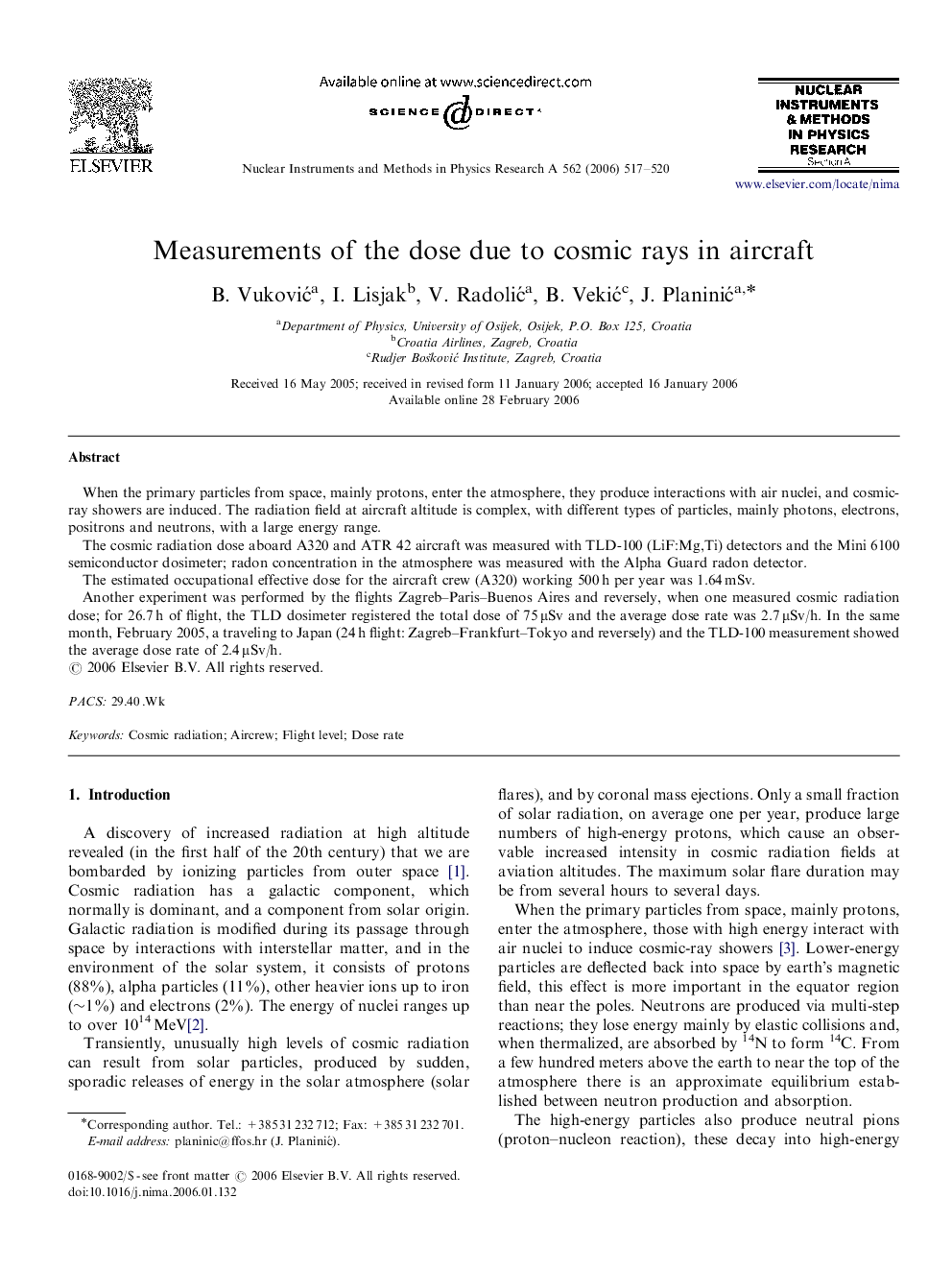| Article ID | Journal | Published Year | Pages | File Type |
|---|---|---|---|---|
| 1832078 | Nuclear Instruments and Methods in Physics Research Section A: Accelerators, Spectrometers, Detectors and Associated Equipment | 2006 | 4 Pages |
When the primary particles from space, mainly protons, enter the atmosphere, they produce interactions with air nuclei, and cosmic-ray showers are induced. The radiation field at aircraft altitude is complex, with different types of particles, mainly photons, electrons, positrons and neutrons, with a large energy range.The cosmic radiation dose aboard A320 and ATR 42 aircraft was measured with TLD-100 (LiF:Mg,Ti) detectors and the Mini 6100 semiconductor dosimeter; radon concentration in the atmosphere was measured with the Alpha Guard radon detector.The estimated occupational effective dose for the aircraft crew (A320) working 500 h per year was 1.64 mSv.Another experiment was performed by the flights Zagreb–Paris–Buenos Aires and reversely, when one measured cosmic radiation dose; for 26.7 h of flight, the TLD dosimeter registered the total dose of 75 μSv and the average dose rate was 2.7 μSv/h. In the same month, February 2005, a traveling to Japan (24 h flight: Zagreb–Frankfurt–Tokyo and reversely) and the TLD-100 measurement showed the average dose rate of 2.4 μSv/h.
